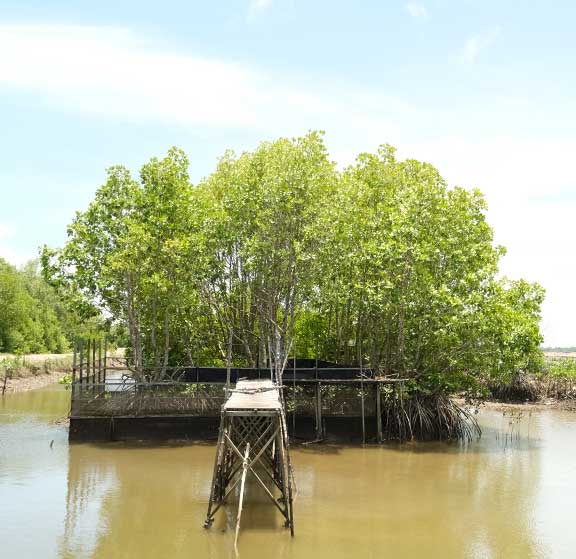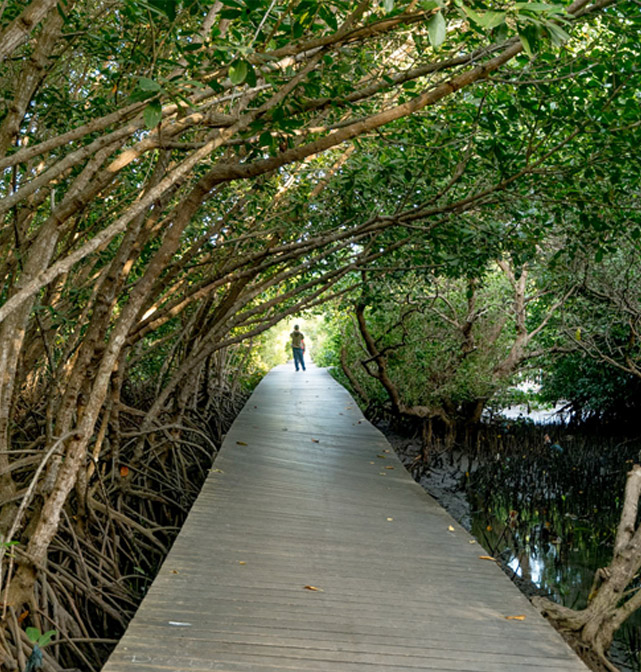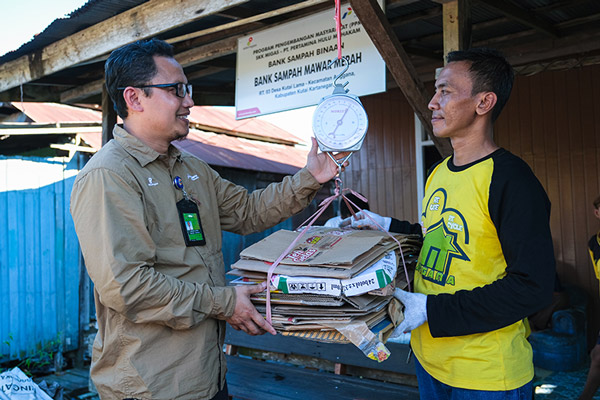The objectives of our environmental program are to improve environmental functions, support environmental conservation and sustainability, environmental rehabilitation, climate change mitigation and adaptation, support the development of alternative energy, and treatment of waste generated by company activities.
MANGROVE REVITALIZATION
Utilizing natural resources in the mangrove ecosystem must be accompanied by efforts to preserve mangroves because the mangrove ecosystem is a foundation of coastal ecosystems in addition to coral reefs and seagrass beds. The high level of abrasion in the mangrove ecosystem in the Company’s operational areas encouraged us to contribute by conducting the Mangrove Revitalization program. In 2019 we planted 1,000 mangroves, followed by 10,000 mangroves in 2020. This program involves elements of the village government and the community and cooperates with the Sahabat Mangrove community, an environmental organization consisting of youth and school students. The activities carried out by this community are studies on mangroves, monitoring of newly planted mangroves, mangrove nurseries, and conducting campaigns about the importance of the existence of mangroves.


JAGA PESISIR PROGRAM
In our view, the natural resources in the Company’s operational areas, especially on the coast, have the potential to be utilized by the community as a livelihood; therefore, their existence needs to be maintained, and coral reefs are no exception. We collaborate with Jejak Pesisir by creating the Jaga Pesisir Program that promotes the importance of environmental conservation in villages and schools. A sustainable coastal environment will create a perfect ecosystem for plant and animal habitats on the coast to live and look for food.
JURAGAN SAMPAH
Another significant environmental problem is waste and how to make it have economic value. We initiated the Juragan Sampah program as one of the efforts to solve the waste problem. The program focuses on empowering Waste Bank units managed by women, with activities such as providing facilities and infrastructure to support the program, increasing the capacity of waste bank managers, providing cross-regional waste management network facilities, conducting campaigns for clean and healthy lifestyles, creating collaboration facilities with relevant agencies, and creating marketing facilities for products made from waste.
